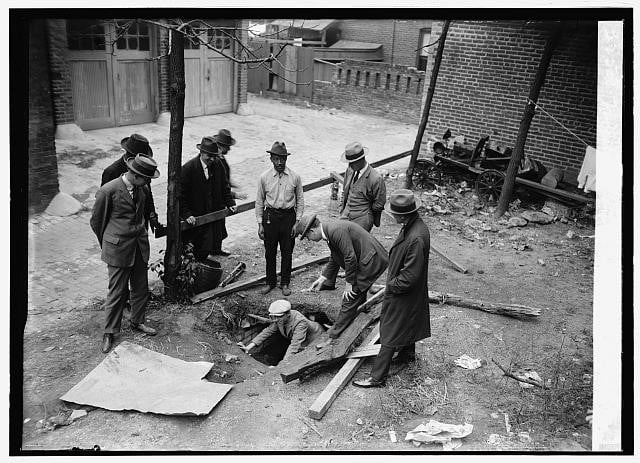Things are getting spooky beneath the ground of Washington D.C.’s Dupont Circle, and residents in the neighborhood may be completely unaware of the existence of hidden tunnels beneath their feet.
These tunnels were said to have been discovered in the early 1900s, a discovery of which sparked various theories as to why they were there. Unfortunately for those same folks, the true nature of these tunnels remained a secret for many years.
Finally, however, we have the opportunity to delve into the fascinating story of this buried secret.
The story begins in 1917, during the construction of the old apartments at Pelham Courts, when workers stumbled upon a brick-lined tunnel, encircling the area for nearly 22 feet. This underground discovery captured public interest, though the story was overshadowed by other major events of the time.
The United States’ had just entered into World War I, and the people of the nation were more focused on wartime matters, and in the chaos and calamity, the mystery of the tunnel was largely forgotten.
That was, until 1924, when something dramatic occurred.
A truck driver accidentally made his way over a soft piece of ground at the Pelham Courts, breaking through the Earth and revealing an extensive and multi-level underground network. This intricate tunnel system, which was equipped with electric lights, lined with white enamel bricks, and adorned with German newspapers from 1917, became a hit news story.
Reporters were quick to make speculations about why it was thee, and many considered whether these tunnels had any connection to the World War I. Some even believed they may have had connections to the Civil War. Nobody got the answers until the mysterious figure behind the tunnels was finally unveiled.
Contrary to what many believed, the builder wasn’t some international super-spy but rather an entomologist. Yup, a bug scientist built the tunnel network.
The esteemed Smithsonian Institute entomologist, Dr. Harrison G. Dyar Jr., was interested in tunnels, an interest that sparked while he was crafting a flowerbed in his own yard. As the years went by, his fascination with tunnels grew.
Beyond the Pelham Courts tunnel, Dyar also constructed a tunnel network that extended 24 feet below his own home, which featured arched ceilings reminiscent of medieval catacombs, and was adorned with sculpted human and animal heads — a nightmarish scene, to say the least.
Oddly enough, Dyar was unable to explain the presence of the German newspapers in the Pelham Courts tunnel, noting he wasn’t there when the newspapers were put up. To this day, that mystery has yet to be solved.
Despite his underground hobby, Dyar made significant contributions to entomology. His taxonomic classification work at the Smithsonian Institute furthered our knowledge of larval stages.
He even had a law named after him (Dyar’s Law), which became a standard method for measuring the lifestyles of insects based on the head sizes of larvae.











































